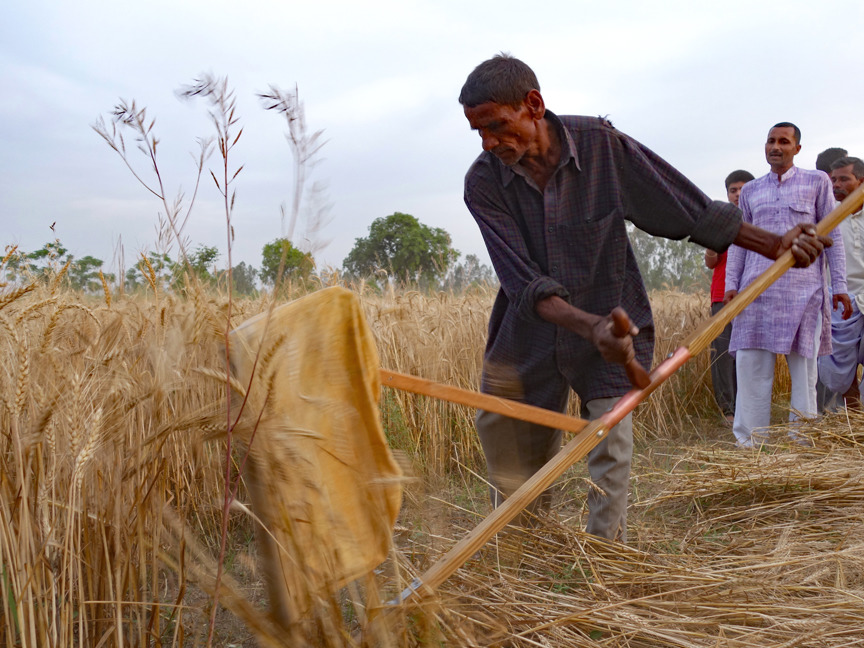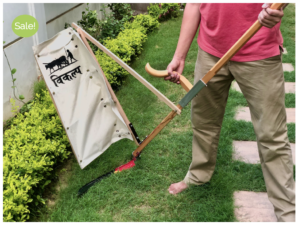Scythe Works Cradle Design
When I first started to plan the Scythe Project In Nepal, it was clear to me that if the scythe is to be accepted in the place where it is practically unknown, it needs to be applicable for a task where it would make the most of the impact; and that is harvesting wheat and the paddy.
While in Nepal and India harvesting grains was a very obvious application for the scythe, here in Canada, I don’t have an opportunity to be testing my cradles and practice cutting the cereal crops.
When I was initially searching for the cradle design online, I came across a wide range of designs anywhere from only single twig over the snath to a cradle with a stock of ribs reaching all the way to the point of the blade. I assume, they all were preferred choices but most likely not all in one region.
I was looking for a simple design that would give me positive results in diverse situations and one that would be easy to travel with. I didn’t feel comfortable totally rely on the simple twig design (for instance, commonly was used in some regions of Slovakia, where I came from).
In 2012, I’ve made this cradle to take with me for the Scythe Project in Nepal.



The cradle was designed for traveling to fit into the backpack. However, since it was assembled and glued, it was under more stress while traveling, than doing the actual work in the field. Even though I was pleased with the performance of this cradle, I also realized, that it is still ‘work in progress’.

The “Slovak cradle” (a single twig) worked in some stands of wheat but not in others. It required more tweaking and would need more experimenting with. This wasn’t easy, as the farmers were very protective of their crops not to ‘mess them up’.

Connect with an English speaking bamboo basket weaver, who might be able to make a cradle out of local material wasn’t easy. When I finally met one in Pokhara I learned that different varieties of bamboo have different qualities and are suitable for different purposes. Also, the bamboo is collected and used just after the rainy season when it is more pliable.

Cradle for Scythe Project In India 2015

For the trip to India in 2015, I’ve made some changes to the original design. My aim was to come up with an alternative that would be more durable and easier to travel with. I think that the trade-off of adding a few grams to the weight was worth it.
I had four holes at the bottom of the snath to align the cradle with the blade. The L-bracket could be bend as needed. Extra holes on the brace allowed me to adjust the top of the cradle, trying to catch all the cut stems, while not brushing too hard against stems that are still standing. We didn’t experience any shading of the wheat due to brushing still uncut heads. However, it can be a potential issue with some varieties of rice, not all. I later cut off the extending ribs over the snath as it was not needed.
This cradle was used for the demonstrations in India 2016

We observed that occasionally wheat ears were getting caught in the cradle. A “pillowcase” was a simple, last-minute solution. In the picture, the cradle is used with an attached cloth cover. Now, the cloth attached to the cradle is a part of the design offered in India.

I used a combination of designs that I found on the internet, using materials and techniques that are available to me. I encouraged people in India to improvise, using local and readily available materials. After several experiments, VIKALP team decided to reproduce Scythe Works design made first out of cane wood and currently out of bamboo.

